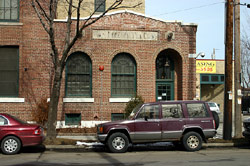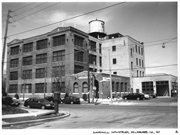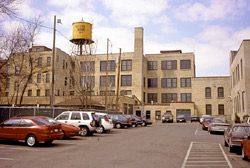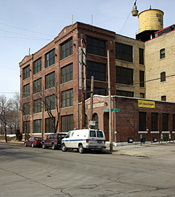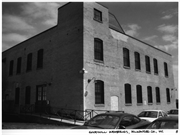2102 West Pierce Street
| Historic Name: | Goodwill Industries Building |
|---|---|
| Reference Number: | 04000714 |
| Location (Address): | 2102 West Pierce Street |
|---|---|
| County: | Milwaukee |
| City/Village: | Milwaukee |
| Township: |
| Goodwill Industries Building 2102 W. Pierce Street, Milwaukee, Milwaukee County Architect: Herman Esser Dates of construction: 1912-1937 In 1937 Goodwill Industries took over the former Van Dyke Knitting Company. The building is associated with Milwaukee Goodwill Industries, Goodwill Industries of America, and the innovative work by Goodwill executives Oliver Friedman and his son Robert Friedman. These men and the staff of the Goodwill organizations housed in the Pierce Street facility developed comprehensive programs within the local and the national Goodwill organizations to serve people with disabilities, programs that influenced changes throughout the rehabilitation service realm. It was in the Pierce Street facility that Oliver Friedman is credited with developing the Occupational Therapy program, the first of its kind in a private rehabilitation organization. In the program, the staff evaluated the physical, educational, psychological, health, and vocational abilities and needs of individuals, planned customized training and physical therapies, and encouraged personal and social development. Two other of Goodwill Industries' programs developed at the facility by Oliver Friedman are credited as being the first in the rehabilitation service movement: to facilitate self-employment, and to place individuals in private employment in business and industries in the local communities. Oliver Friedman's organizational work led to his election to the position of Executive Secretary of the National Association of Goodwill Industries in 1939. He administered that organization's work, which at that time was comprised of 108 local Goodwills, from this facility until mid-1946. During World War II, Friedman directed salvage drives and fund-raising programs across the country, the success of which significantly changed the public attitudes and perceptions of disabled people. Robert Friedman pioneered two innovative programs during his tenure, first as Managing Director in 1942, then as Executive Director of the Milwaukee Goodwill Industries from 1944 to 1951. He developed jobs for the blind and mentally handicapped by contracting work from local industries including packing and assembly jobs; and providing a personal counselor on staff, who coordinated the various services offered by Goodwill based on each individual's abilities. Together, in 1947, Oliver and Robert Friedman took their comprehensive plan to reconfigure the national Goodwill organization to the national conference on rehabilitation. This led to reorganization within Goodwill to provide broader services for people with disabilities, and was pivotal in the rehabilitation movement in which Goodwill played a significant role. Goodwill occupied the building until 1963. In 2003 Gorman and Company converted the building to loft apartments using historic preservation income tax credits. The apartments are private residences. Please respect the rights and the privacy of the residents.
|
| Period of Significance: | 1937-1951 |
|---|---|
| Area of Significance: | Social History |
| Applicable Criteria: | Event |
| Historic Use: | Social: Civic |
| Architectural Style: | Late 19th And Early 20th Century American Movements |
| Resource Type: | Building |
| Architect: | Esser, Herman |
| Historic Status: | Listed in the National Register |
|---|---|
| Historic Status: | Listed in the State Register |
| National Register Listing Date: | 07/14/2004 |
| State Register Listing Date: | 04/16/2004 |
| Number of Contributing Buildings: | 1 |
|---|---|
| Number of Contributing Sites: | 0 |
| Number of Contributing Structures: | 0 |
| Number of Contributing Objects: | 0 |
| Number of Non-Contributing Buildings: | 0 |
| Number of Non-Contributing Sites: | 0 |
| Number of Non-Contributing Structures: | 0 |
| Number of Non-Contributing Objects: | 0 |
| National Register and State Register of Historic Places, State Historic Preservation Office, Wisconsin Historical Society, Madison, Wisconsin |

